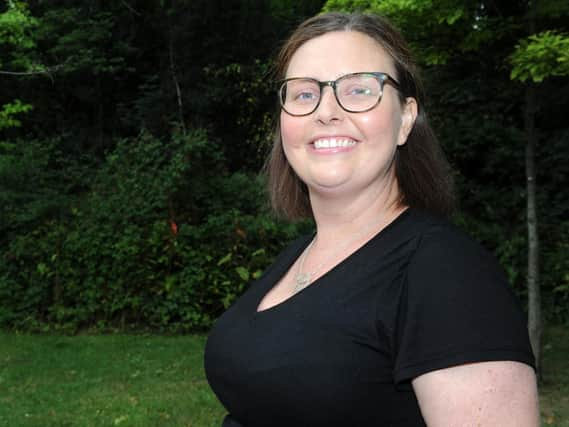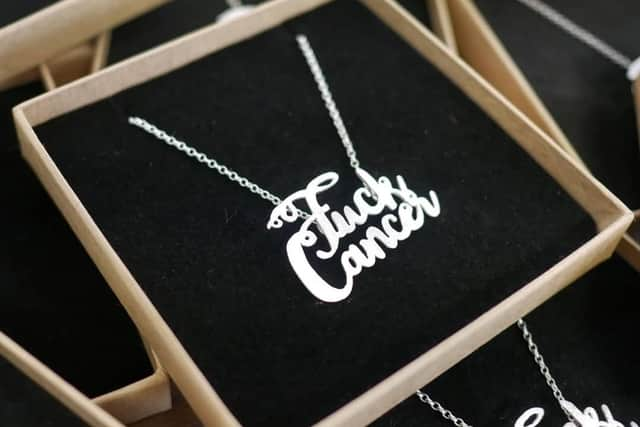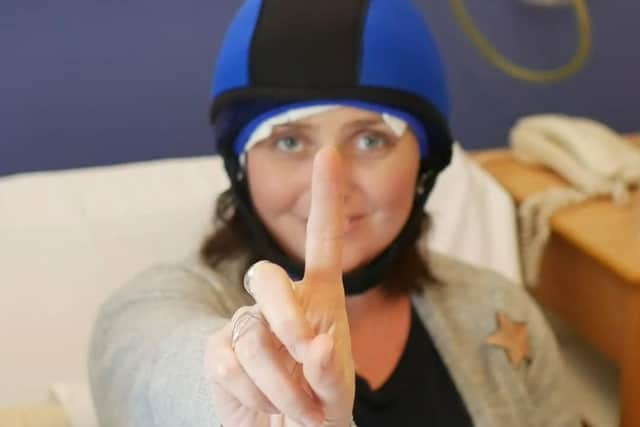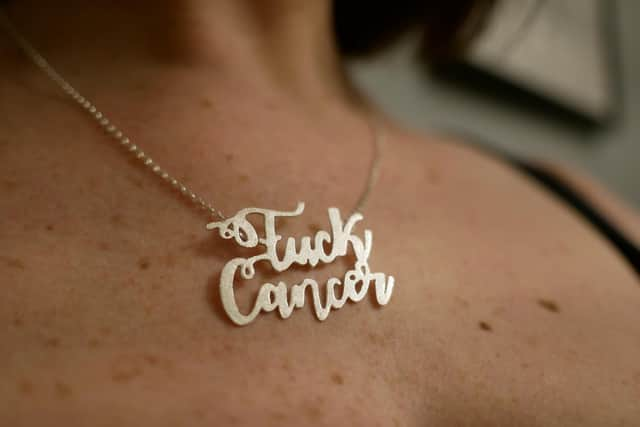Living life to the full after a terminal diagnosis is possible says young Sheffield cancer sufferer


After first being diagnosed in 2016, the 37-year-old was given a secondary diagnosis in February after scans revealed the disease had spread to her sternum and lymph nodes.
This means her condition is medically incurable but not untreatable, meaning it could be controlled with more chemotherapy and drugs for quite some time.


Advertisement
Hide AdAdvertisement
Hide AdBut despite this uncertainty, it is very clear Emma – who lives in Nether Edge with her boyfriend Jim and their two dogs – has no intention of doing anything other than thinking of the future.
“I haven’t been given any timescales but I haven’t asked,” she says.
“There are people who have lived 10 years with what I have, but about 11,000 people in the UK die of metastatic cancer each year and the average survival rate is just three years.
In my mind I am still planning for weddings of friends who are getting married next year – but there is always a little part of my brain that is thinking about my mortality.”


Advertisement
Hide AdAdvertisement
Hide AdEmma was first diagnosed with primary breast cancer two years ago this month.
She found a lump but says she was initially ‘fobbed off’ by a locum doctor because it was painful. She went back and had a scan that confirmed her fears.
Emma then had a lumpectomy, two rounds of IVF to preserve her fertility, six rounds of chemotherapy and 23 sessions of radiotherapy.
This intensive treatment finished in May 2017, but – after a snowboarding accident in which she broke her sternum – in February it was found the cancer had spread.


Advertisement
Hide AdAdvertisement
Hide AdShe said: “Normally secondary cancer doesn’t come back for five or more years but I was diagnosed nine months later.
“The plan now is to contain it for as long as possible. They can treat it but it will never go away – and it will kill me in the end.”
After her current round of chemotherapy finishes, she will be put on two more drugs every three weeks for as long as they work.
“I have been really lucky that I have not been really sick – I can be very tired and fatigued and some days I struggle to get off the sofa.


Advertisement
Hide AdAdvertisement
Hide Ad“But on other days I feel as close to normal as it is possible to feel.”
Part of this relative normality has been down to the fact she has kept her hair thanks to an invention called the ‘cold cap’.
This cools her hair follicles while she undergoes treatment, meaning they are less likely to fall out, but has also come with costs.
“It is not the nicest thing but keeping my hair has been a big part of carrying on as normal,” she says.
Advertisement
Hide AdAdvertisement
Hide Ad“You can walk into a pub and people don’t look at you differently. But it is a bit of a double edged sword because it makes it an invisible illness. Often you are not feeling great and people don’t know why.”
As a cancer sufferer she says certain aspects of the way we approach the condition have become clearer to her.
One of these is the lack of funding for secondary cancer – which only receives between five and seven per cent of worldwide cancer spending.
“Fifty years ago we couldn’t cure primary cancer but now they can and that is because there has been so much money going into it,” she says.
“There is also a big hierarchy in cancer – it is very odd.”
Advertisement
Hide AdAdvertisement
Hide Ad“Breast cancer is obviously very prominent and everything is pink and fluffy, but bowel cancer – because it is about poo – gets less attention.”
Since her diagnosis, she began sharing her story on a personal blog, is a very active member of the young breast cancer network Facebook group and has even given talks on her experiences to live audiences.
Her blog contains posts with advice about using the cold cap as well as updates on the stupid things that people say to her. Just, she says, ‘whatever is going on in my head’.
And as well as the blog, she has also become a jewellery maker – with a special line in very beautiful but defiantly foul-mouthed silver necklaces.
Advertisement
Hide AdAdvertisement
Hide Ad“When I put it on Instagram so many people got in touch to say that they would buy it and they have been true to their word,” says Emma.
She is now selling gold and rose gold versions of it as well as pin badges to people all across the UK as well as customers in Europe and North America.
Part of the money she raises from the necklaces goes to Cavendish Cancer Care, whose support over the last two years has been ‘amazing’, she says.
Emma’s blog can be found at www.ohgoshblog.co.uk, her jewelry at www.etsy.com/uk/shop/OhGoshSilver and her cancer necklaces can be found at www.emily-alice.com/product-category/fuck-cancer.